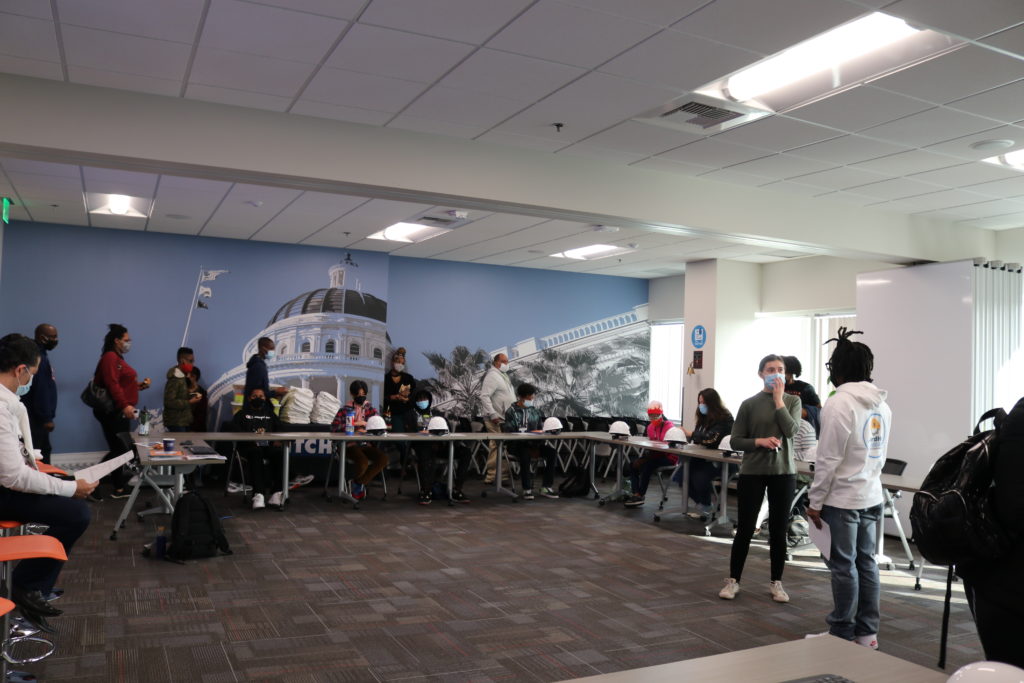Like any construction company executive, one of Wendy Cohen’s ongoing vexations is a labor shortage: Not enough people to lay the foundation, swing the hammer and put up the drywall.
So in reading a magazine story nearly two years ago about a Sacramento teacher running an academy focused on teaching STEM – science, technology, engineering and math – her mind began seeing possibilities, she said.
“There’s really a challenge with our industry in developing a young workforce, and there’s not a ton of diversity either,” said Cohen, president at Sacramento-based Kitchell) CEM. She reached out to the teacher, Nicholas Haystings, about how they might join forces.
The result is Hard Hat Scholars, a program on construction careers for interested students from high schools serving large low-income populations. The first session of 18 students, meeting on Saturdays, kicked off in February.
Hard Hat Scholars, through Haystings’ Square Root Academy, will include classes on construction technology, trades such as electrical and mechanical jobs, and 3D modeling. Students will also visit project sites, hear from industry professionals and compete for four $2,500 scholarships provided by Kitchell. Another student will receive a summer internship.
“This is exposing them to all the aspects of construction, trades to engineering to professional roles,” Cohen said. “It’s allowing them to have exposure to an industry they don’t know much about.”
At the kickoff event, Cohen said, parents beamed as they dropped off students, who had to apply and describe why they were interested in the program to be part of it. She said she was struck by how serious those students are, with one already sure of a future career in architecture.
Hard Hat Scholars could ramp up in years ahead, Cohen said. She said she’d like to open it up to more students, and she’d like to see about incorporating it into a school curriculum so classes can be held during the week rather than on a weekend. In 10 years, she said, she’s hoping the program is not only thriving, but provided a starting point for students to get into construction fields and then come back and talk to other students about their experience.
When she was younger, she said, she had a summer program in architecture where the principal thing she learned was that she didn’t want to be an architect. But for her industry, just getting younger people into a setting to learn about such jobs has become vital, she said.
“Many in the industry are putting the connection to reaching out early,” she said. “It’s an area where you can grow a career.”
